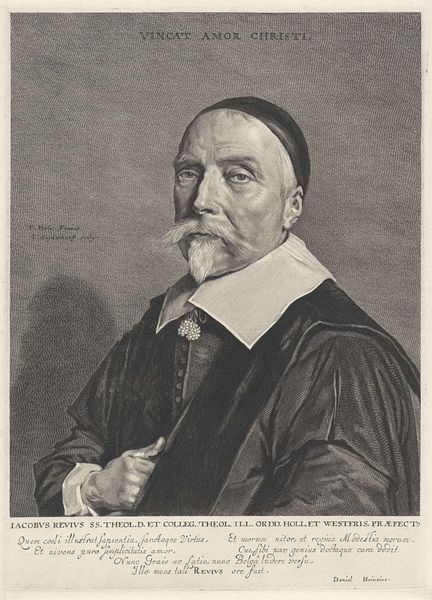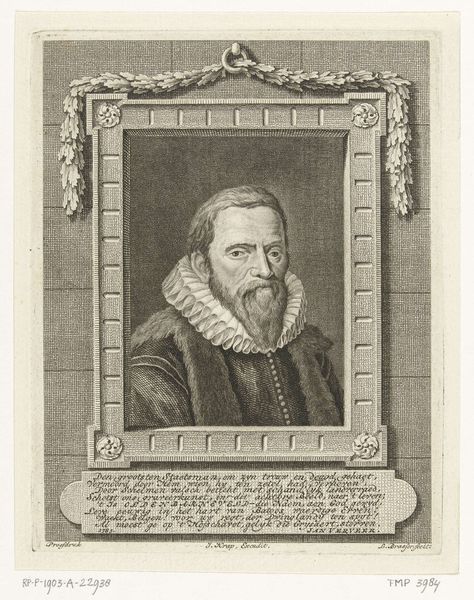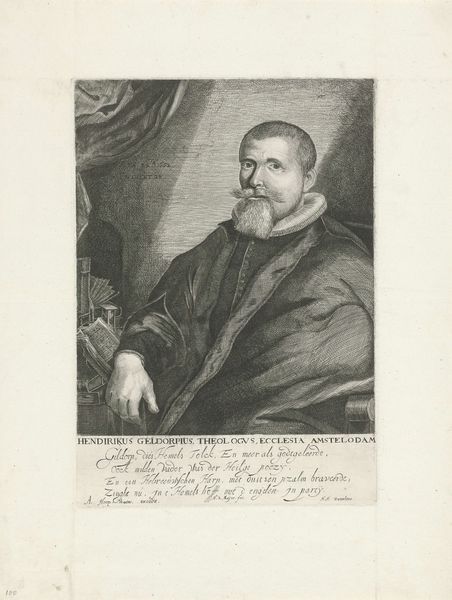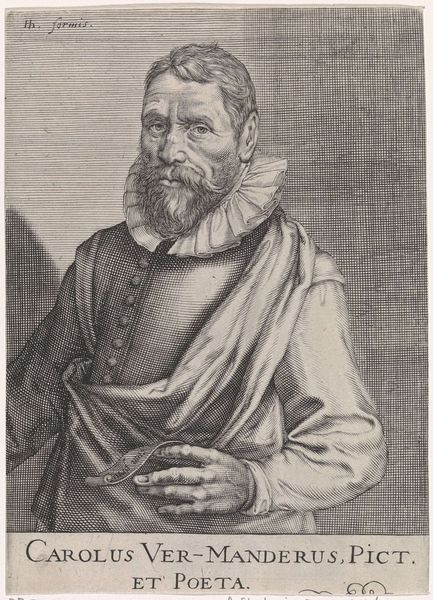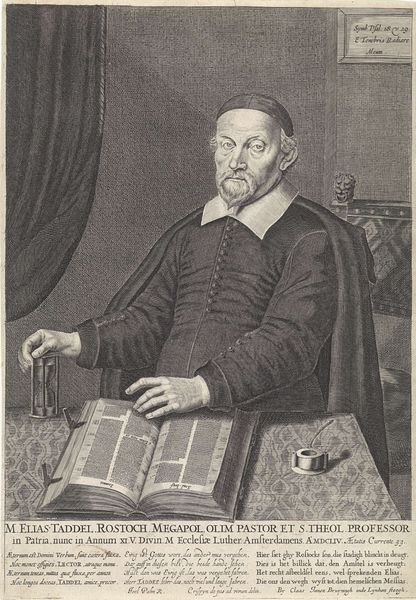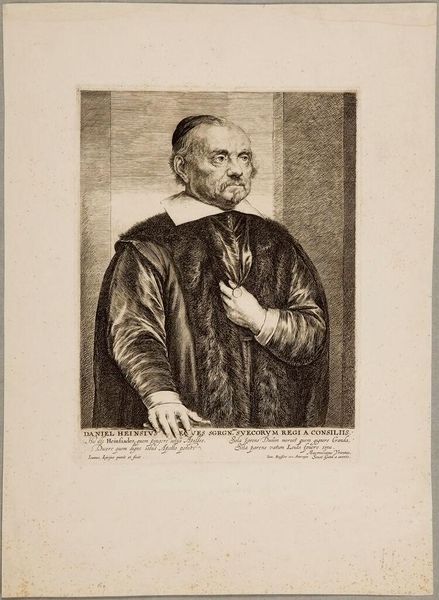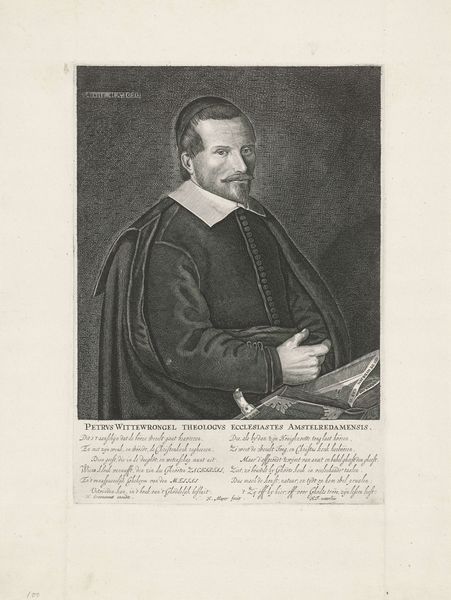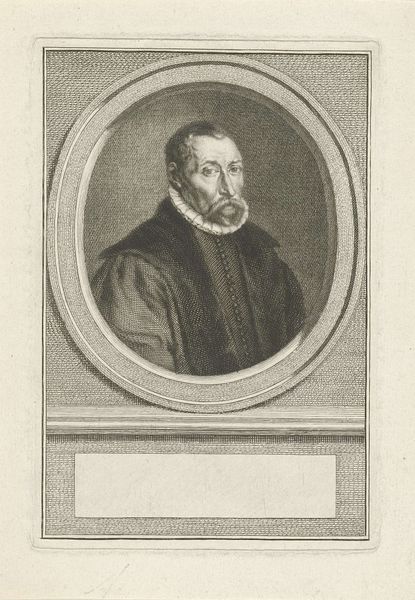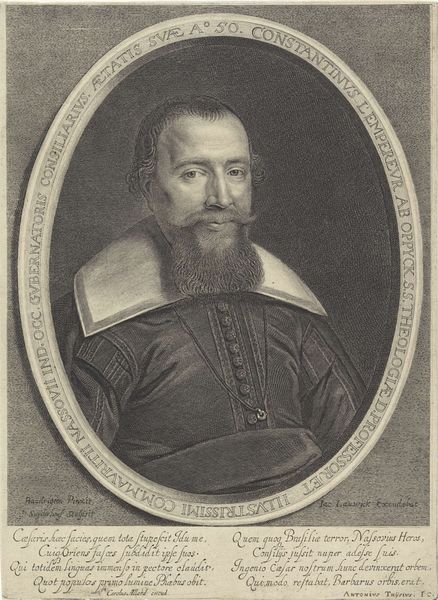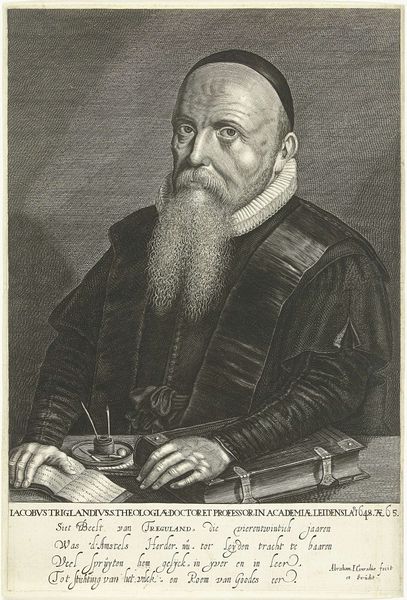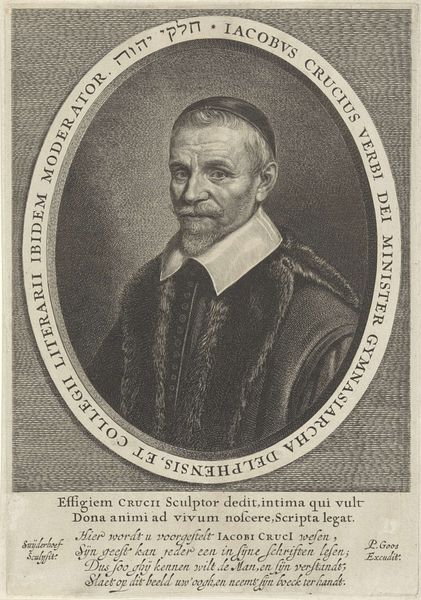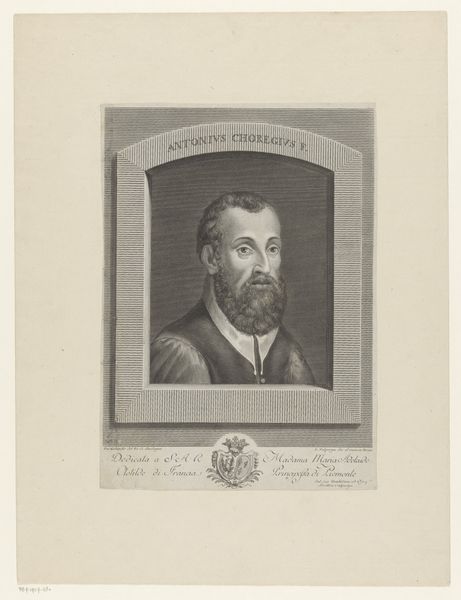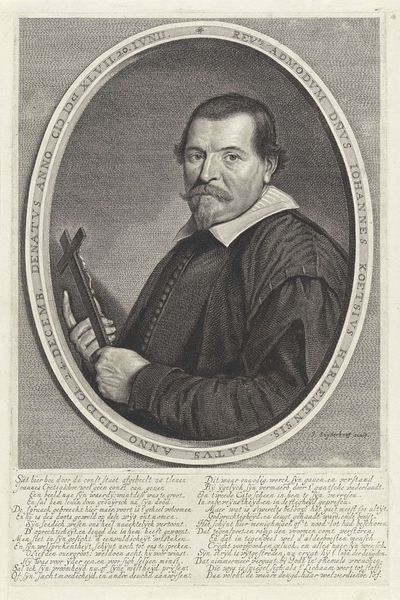
engraving
#
portrait
#
baroque
#
dutch-golden-age
#
charcoal drawing
#
line
#
portrait drawing
#
history-painting
#
engraving
Dimensions: height 318 mm, width 232 mm
Copyright: Rijks Museum: Open Domain
Editor: This engraving, "Portret van Samuel Ampzing," created sometime between 1630 and 1686 by Jonas Suyderhoef, has such a compelling presence. The stark lines and monochrome palette give it a serious, almost austere mood. How do you interpret this work? Curator: For me, this portrait is a window into the social and intellectual climate of the Dutch Golden Age. Consider Ampzing's role: a pastor, deeply connected to both the church and the "patria," the fatherland. Suyderhoef isn’t just capturing a likeness; he's constructing an image of civic virtue. Look at the book Ampzing holds. What does that symbolize to you? Editor: Knowledge, faith… authority, perhaps? Curator: Precisely. It speaks to the power structures of the time. Ampzing's gaze is direct, unwavering. He's not just a man; he represents a set of beliefs, a social order. Consider how this image might have functioned: circulating within a community, reinforcing certain ideals of masculinity, piety, and civic responsibility. Think about who had access to images like these and what messages they were meant to receive. Editor: So, beyond just being a portrait of an individual, it's also reflecting the values and expectations placed upon certain figures in society? Curator: Exactly. It's about understanding how power, religion, and identity intersect in this specific historical moment. These weren't neutral images, and artists rarely work in a vacuum; they actively took part in conveying and negotiating their patrons’ and societies' core beliefs and values. Editor: I never thought about it that way before. I was focusing on the individual, but understanding the broader context really opens up the meaning of the portrait. Curator: That's the exciting thing about art history – it can act as a social and political mirror, and, when looked at from different perspectives, challenge what we think we know.
Comments
No comments
Be the first to comment and join the conversation on the ultimate creative platform.
